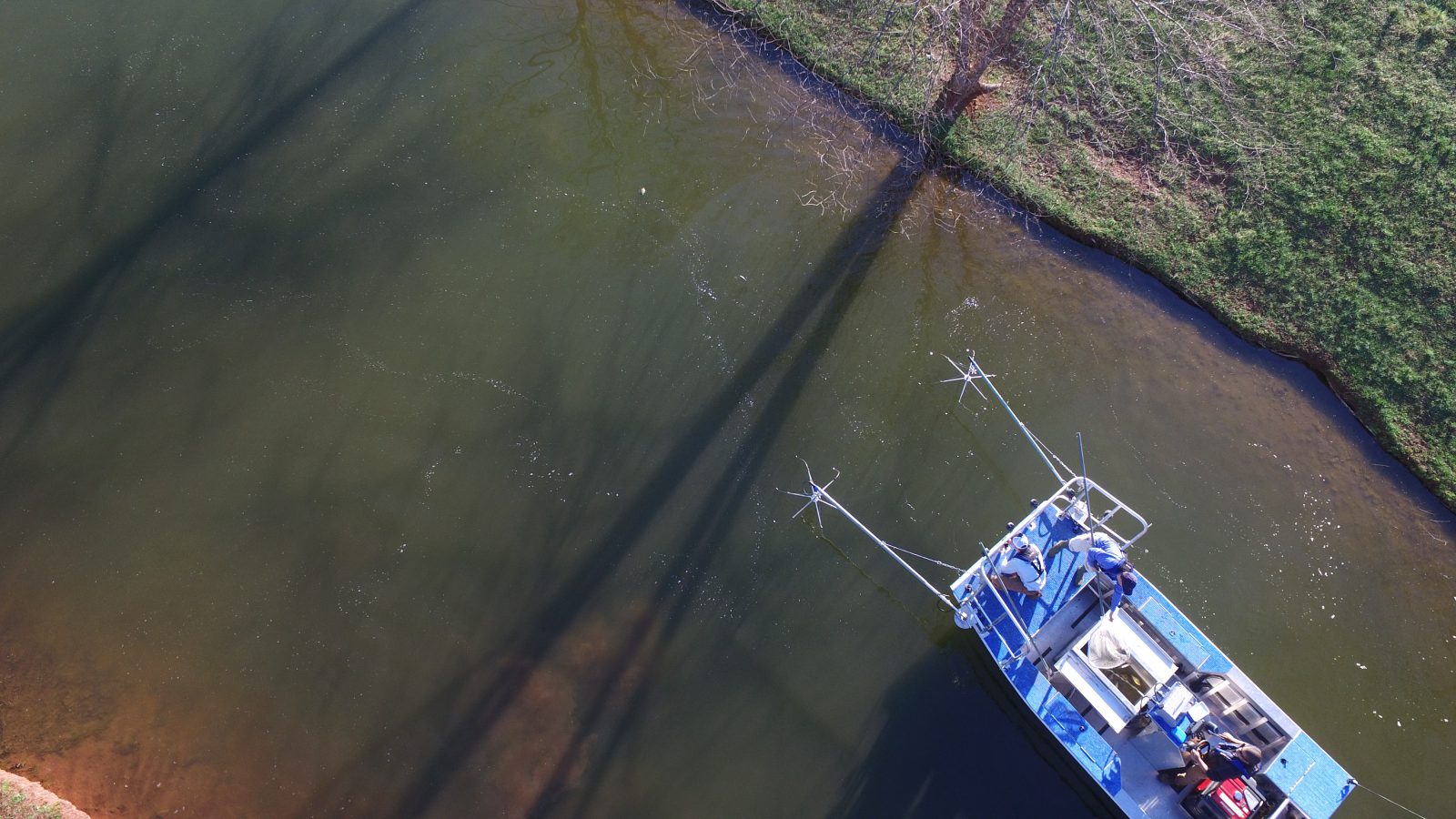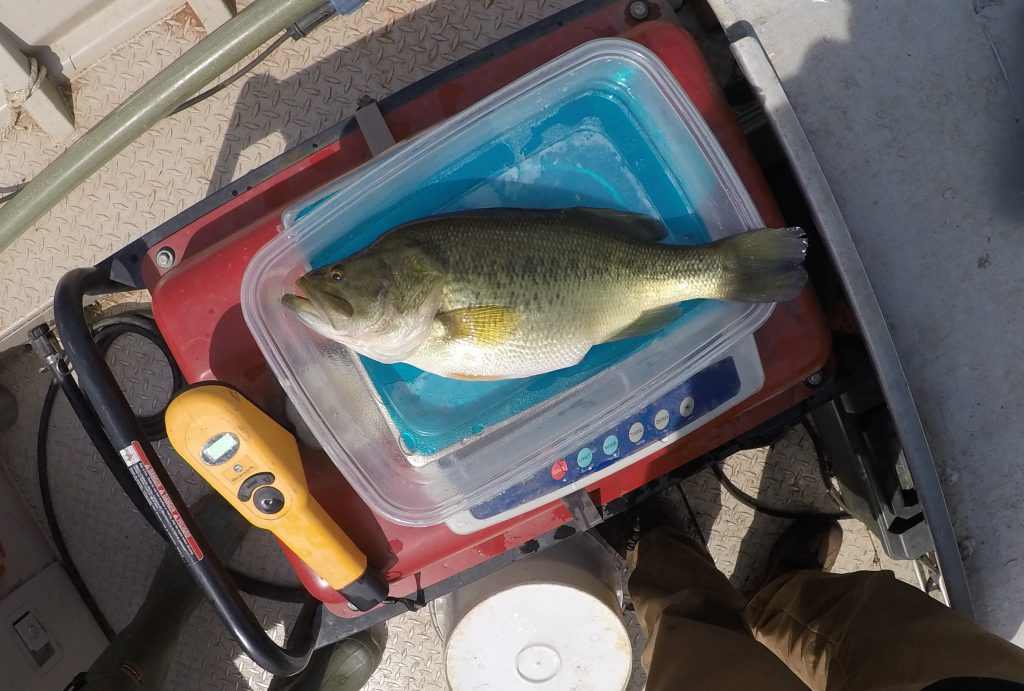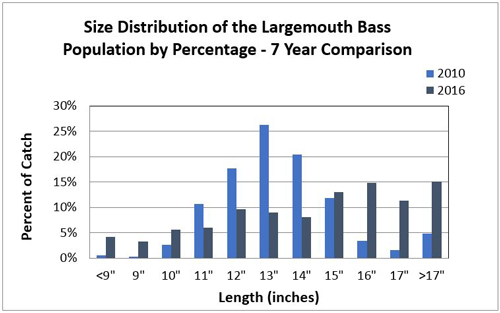
Site Description
Location: West Point, VA
This Fishing Club is a 47-member private sports club located in the heart of central Virginia. Over the years, the fishery has produced a significant number of Largemouth Bass weighing between 5 and 10 pounds, but their success has been inconsistent. Some years, the club would catch more than 50 trophy bass, other years as few as three.
Members of the club, along with state biologists, could not figure out how to stabilize the fishery and achieve more consistent results. Additionally, the pond was infested with hydrilla. At this point, the club decided to work with a professional fisheries management company to try and improve its bass population.

Scope of Work
Upon meeting with a concerned club member and learning about the pond, it was apparent that this troubled waterbody had some great qualities. Rich with life and bursting at the seams with freshwater, its 26,000 acres of undisturbed watershed provided an annual average flow rate of 8.66 cubic feet per second (CFS), or nearly 5.6 million gallons of water each day. The pond is about 4 feet deep and has a long, narrow shape, providing roughly 4 miles of wooded shoreline to serve as great natural cover.
Unlike most managed fisheries, this club kept incredible fishing records of angler data such as quantity and length of each species caught, as well as the date, the number of hours fished and who was fishing. Additionally, all bass larger than 5 pounds had both length and weight recorded. Having this data in an organized form provided insight into the fishery’s history along with an understanding of why the fishery produced inconsistent numbers of big bass over the years.

Project Description
SOLitude began by addressing the most glaring issue – the hydrilla infestation. The upper end of the pond was a 50-acre field of plush, topped out hydrilla. With the shallow water fishery literally being strangled, an aggressive approach was needed to regain control. Based on the budget and site conditions, the best long-term control method available was to stock 750, 10- to12-inch grass carp. In addition to the carp, a 10-acre channel in the upper half of the pond was treated using herbicides to ensure anglers had access to the entire pond that summer. With this approach, the hydrilla was fully controlled within the first growing season.
SOLitude’s fisheries biologists also conducted an electrofishing survey, which identified gizzard shad as the majority of the forage base. Bluegill and other sunfish species were in the mix, but low in population due to decades of anglers harvesting all bluegill and releasing all bass. Making abrupt changes to the bluegill population was not necessary, but we altered creel limits to eliminate their harvest. Additionally, 6,000 adults were stocked to help the population to rebuild itself. Managing fish species with a low budget required the club to focus on the habitat and predator-to-prey ratio, allowing the fishery to become self-sustaining and produce an abundant forage base capable of supporting the club’s desired bass fishery.
Water quality was another critical variable in the management of the fishery. The pond was very fertile and had a high flow, but each summer the pond’s watershed tended to dry up, resulting in little or no water flow for a couple of months. This stagnant period caused the plankton population to flourish. In 2010, to aid in the pond’s productivity over the summer, the management approach was modified and a few hundred pounds of quick dissolve fertilizer were added.
In addition to giving the fishery an annual nudge with fertilizer, dissolved oxygen profiles were taken of the water column twice every summer, allowing SOLitude to confirm that the fishery’s productivity and water quality were being managed as adequately as possible. When SOLitude was first consulted by the fishery, only 22 percent of bass caught were greater than 15 inches. By 2014, following four years of diligent management, 50 percent of the bass caught were greater than 15 inches. The positive increase in bass size came in exchange for a 20 percent lower catch rate, and although members caught less fish during each outing, the restructuring of the bass size distribution earned extensive support from the club’s members, and now all bass less than 15 inches are harvested.









